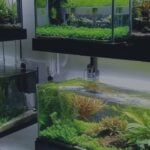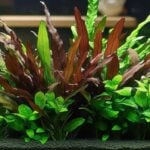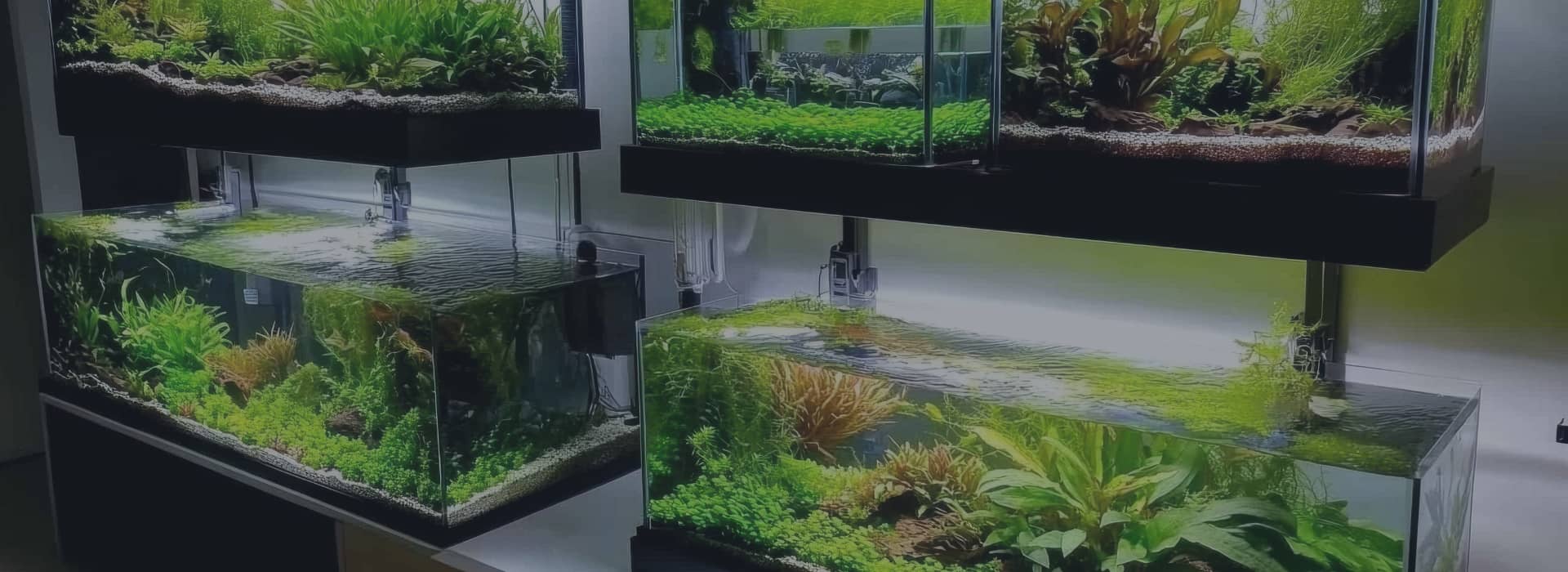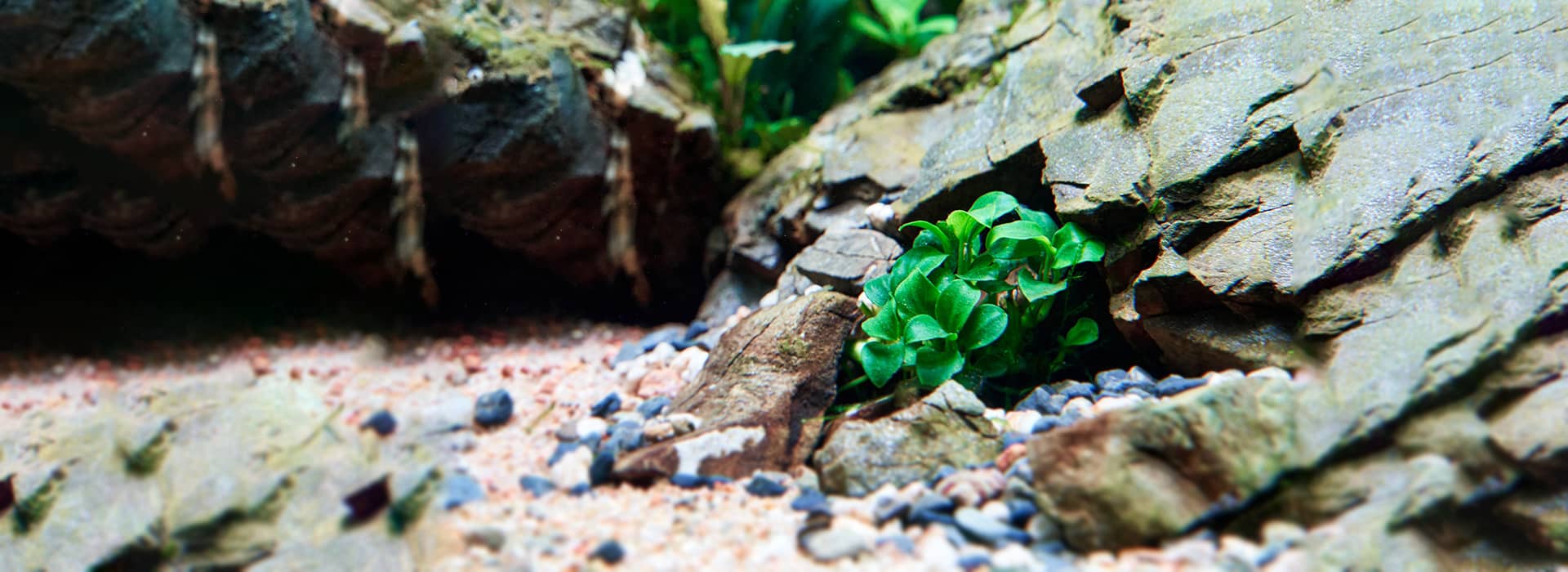Early in my life as an aquascaper, I saw this stunning planted tank at my local fish store. I was so enamoured by it that I decided to replicate it at my home. My knowledge about planted tanks was quite limited back then and one area that I unwittingly decided not to invest much time or effort in was lighting. I just chucked in a few lights that I could afford. You can guess where this is going. Despite my best intentions, I could never get the plants in that tank to grow properly until I put in the proper lights.
Today, I will cover one of the most important aspects of aquarium lighting that I had to learn the hard way – spectrum.
What Is Light Spectrum?
Light spectrum refers to the range of electromagnetic wavelengths that can be detected by the human eye. This range includes all the colors of the visible light, from violet to red, as well as wavelengths that are not visible to the naked eye, such as ultraviolet and infrared light. Simply put, each color has a specific wavelength and frequency and in a planted tank, its own role and function.
In the context of aquarium lighting, the spectrum of light is important for aquarium plants because different wavelengths of light are used for different plant processes such as photosynthesis, growth, and reproduction. The right spectrum of light can promote healthy plant growth and enhance the colors of aquatic life, while the wrong spectrum can lead to poor plant growth and excessive algae growth. In addition, the spectrum also plays a vital role in how the plants look. Therefore, selecting the appropriate spectrum of light is critical for the health and success of a planted tank.
Is The Entire Spectrum Needed For Planted Tanks?
While the entire spectrum of light is not necessary for a planted tank, a range of wavelengths is needed to support healthy plant growth and development. Plants require specific wavelengths of light for different processes. For example, blue light is important for leaf growth, red light is important for flowering, and green and yellow light are important for photosynthesis.
In addition to supporting plant growth, a diverse spectrum of light can also enhance the natural colors of aquatic life, making the aquarium more visually appealing. However, some wavelengths of light can also promote algae growth, so it is important to strike a balance and avoid overexposing the aquarium to certain wavelengths of light.
The Parts Of The Spectrum Most Essential For Planted Tanks
For most planted tanks, a spectrum of light that includes blue, red, green, and yellow wavelengths is ideal. Here is a closer look at each of these components.
Blue Part Of The Spectrum
Blue light is important for planted aquariums because it plays a critical role in the growth and metabolism.
Blue light has a shorter wavelength than other colors of light, which makes it easier for plants to absorb. Blue light also stimulates chlorophyll production, which is necessary for photosynthesis. Additionally, blue light helps regulate the plant’s biological clock, ensuring that its life processes take place in a timely manner.
In aquatic plants, blue light is particularly important because it penetrates deeper into the water than other colors of light, allowing it to reach the lower leaves and stems of the plants. This can promote overall plant growth and health.
However, be aware that blue light alone is not sufficient for plant growth. Plants also require other colors of light, such as red, green, and yellow, for optimal photosynthesis. A balance of different colors of light is necessary to provide the full spectrum of light that plants need for healthy growth.
Red Part Of The Spectrum
Red light is important for planted aquariums because it is one of the primary colors of light that plants use for photosynthesis. Red light has a longer wavelength than blue light. While it may not reach the lower depths of the aquarium as effectively as blue light, it can penetrate deeper into the plant tissue itself and can be absorbed by chlorophyll molecules more efficiently.
When aquatic plants receive enough red light, they can use it to produce energy and grow more efficiently. Red light also helps regulate a plant’s flowering and fruiting process, which is essential for aquatic plants and their reproduction.
In addition to promoting plant growth, red light can also enhance the coloration of some aquatic plants. In some non-green plants, generally used as centrepieces, red light can stimulate the production of pigments, such as anthocyanins, which can give plants an even brilliant red or purple coloration.
Green Part Of The Spectrum
Green light is important for planted aquariums because it plays a crucial role in photosynthesis and can enhance the appearance of aquatic plants.
Green light is absorbed by chlorophyll, the pigment that allows plants to capture light energy for photosynthesis. In fact, chlorophyll absorbs green light more efficiently than any other color of light. However, green light is also reflected back by chlorophyll, which is why plants appear green to the human eye.
While green light is not used as efficiently as red or blue light in photosynthesis, it is still an important component of the light spectrum for plants. Without green light, plants may show stunted growth and poor overall health.
In addition to its role in photosynthesis, green light can also enhance the appearance of aquatic plants in a planted aquarium. Most aquarium plants have green leaves, and exposing them to a balance of red, blue, and green light can bring out the natural colors of the plants and make them look more vibrant and healthier.
Yellow part of the Spectrum
Yellow light is not as important for planted aquariums as blue, red, and green light, which are the primary colors used by plants for photosynthesis. However, yellow light can still play a role in promoting plant growth and enhancing the appearance of aquatic plants.
Yellow light has a longer wavelength than blue or green light and is absorbed less efficiently by chlorophyll. However, it can still be used by plants to produce energy and may help to balance the overall spectrum of light in a planted aquarium.
In terms of plant appearance, yellow light can enhance the yellow and gold tones in some aquatic plants, making them look more colourful and vibrant. It can also provide a warm, natural-looking light that is pleasing to the eye.
Yellow light is not essential for planted aquariums but it can be a useful component of a balanced spectrum of light that supports optimal plant growth and aesthetic appeal. However, blue, red, and green light should be the primary focus when choosing lighting for a planted aquarium.
How To Identify Spectrum Rating Of Aquarium Lights
Aquarium lights are typically rated for spectrum using a metric called the Kelvin (K) rating, which indicates the color temperature of the light source.
Lower Kelvin ratings indicate warmer, more yellow, or red light, while higher Kelvin ratings indicate cooler, more blue or white light. For example, a typical incandescent bulb emits light at around 2,700 K, while daylight has a color temperature of around 5,500-6,500 K.
When it comes to aquarium lighting, the ideal Kelvin rating depends on the type of plants. Generally, a Kelvin rating between 5,500-7,000 K, which provides a balanced spectrum of light that includes blue, red, and green wavelengths and a bit of yellow as well is a great option for most plants. This spectrum of light is most effective for photosynthesis and plant growth.
On the other hand, some fish and invertebrates may benefit from warmer or cooler lighting depending on their natural habitat. For example, fish and invertebrates that live in shallow, sunlit waters may thrive under lighting with a higher Kelvin rating, while those that live in dimly lit, shaded areas may do better under warmer, more yellow, or red lighting.
In an aquascaped tank, the plants should be the priority and the lights should cater to their needs first but if you can also ensure that the other inhabitants look great, then it is a win-win situation for all.
Colour Temperature Of Common Aquarium Lights
The Kelvin rating of different types of aquarium lights can vary widely, depending on the specific brand and product. However, here are some general guidelines for the Kelvin ratings of different types of aquarium lights:
Fluorescent lights: Fluorescent lights are a popular choice for planted aquariums, as they provide a balanced spectrum of light that supports photosynthesis and plant growth. The Kelvin rating of fluorescent lights typically ranges from 5,000-10,000 K, with some falling in the range of 6,500-8,000 K.
LED lights: LED lights have now become the de facto choice for aquariums due to their energy efficiency, long lifespan, and versatility. The Kelvin rating of LED lights can vary widely depending on the specific product, but most LED lights for planted aquariums fall in the range of 5,500-8,000 K.
Metal halide lights: Metal halide lights are a type of high-intensity discharge (HID) lighting that produce a very bright, intense light. The Kelvin rating of metal halide lights typically ranges from 6,000-20,000 K, with most bulbs falling in the range of 10,000-14,000 K. These are only ever needed in very deep tanks.
Incandescent lights: Incandescent lights are not commonly used for aquarium lighting due to their high heat output and low energy efficiency. However, for those who still use them, the Kelvin rating of incandescent lights typically ranges from 2,500-3,500 K, which produces a warm, yellow light. I would never recommend using them as they can burst when water condenses on them which is the last thing you would want anywhere near a tank full of water.
Choose a light that provides a balanced spectrum of light that includes blue, red, and green wavelengths, as these are the primary colors used by plants for photosynthesis. A bit of yellow helps with the aesthetics. Getting a good set of LED lights meant for planted tanks from a reputed brand is the approach I would recommend.
FAQs
What is the best spectrum of light for planted tanks?
The best spectrum of light for planted tanks is one that provides a balanced mix of blue, red, and green wavelengths, which are the primary colors used by plants for photosynthesis. A Kelvin rating of 5,500-7,000 K is typically recommended for planted tanks.
Can I use any type of light for my planted tank?
No, not all types of lights are suitable for planted tanks. Choose a light that provides a balanced spectrum of light that includes blue, red, and green wavelengths, as these are the primary colors used by plants for photosynthesis. A bit of yellow helps as well. Some types of lights that are commonly used for planted tanks include fluorescent, LED, and metal halide lights.
What is spectrum in planted tanks?
Spectrum refers to the range of light wavelengths that plants in a tank receive to undergo photosynthesis.
Why is spectrum important for planted tanks?
The spectrum of light affects plant growth and health, and therefore affects the overall health of the aquarium ecosystem.
What is color temperature?
Color temperature is a measure of the color appearance of light, expressed in units of Kelvin (K). A light source with a lower color temperature will have a warmer, yellow-orange color, while a light source with a higher color temperature will have a cooler, blue-white color.
Conclusion
Light spectrum is a crucial factor in maintaining a healthy and thriving planted aquarium. A combination of blue, red, green, and yellow wavelengths, with a color temperature of 6500K to 7500K, is generally recommended for the best results. LED lights are the most popular choice due to their energy efficiency and customizable spectrums. Keep in mind that too much light can be harmful to plants, leading to excessive algae growth and damage. Along with lighting, other factors such as nutrient levels, water flow, and water parameters must be considered for optimal plant growth. With the right balance of all these factors, you can create a beautiful and healthy planted aquarium ecosystem.








